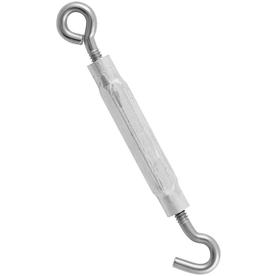Do any of you ever use wire to steady your install poles? Perhaps I'm not too good at getting the pole plum in the first place, but I find it good to use some wire and some turnbuckle connectors for fine tuning when I am just barely off...



Do any of you ever use wire to steady your install poles? Perhaps I'm not too good at getting the pole plum in the first place, but I find it good to use some wire and some turnbuckle connectors for fine tuning when I am just barely off...

From what I have seen, unless you have something VERY solid to connect the cable to, a guy-wire will just pull right up out of the ground. If your pole is moving at all, unless you can connect to the trunk of a tree or a huge rock, it's not likely to provide enough force to stop the movement. Plus the cables will end up making it difficult to cut grass/weeds around the dish, and/or access the dish with ladders, etc. If your dish moves due to pole flexing, you really need to install a more stable pole, not use a guy wire. I had a friend who tried to anchor his pole to cables anchored to anchors driven quite deep into the ground, and the dish pulled them out.
Now, if the pole is stable, but not plumb, my feeling is that since it really isn't necessary to have a plumb pole, I'd either just go to the extra trouble it takes to align a dish on a non-plumb pole, OR go to the trouble of installing an adjustable top hat on the pole, rather than attempting to install guy wires.
I really think that guy wires may be a temporary fix, but will sooner or later fail, and they really make a mess of the installation. But that's just my opinion.
Here is a picture of my ground mount 10 foot Orbitron. I didn't have a pole long enough to concrete it into the ground so I improvised. Its been this way for about 5-6 years now without problems. Instead of turnbuckles, I used a doubled-up cable with a rod in the middle to twist the cable to the proper tension. The anchors are some 3-4 foot ground anchors I scrounged up and beat into the ground. I think the key to its solidness is the tight cables in three different directions. They keep the pole steady when I move the dish from one satellite to another, no matter which direction the dish is pointing. Something to consider. Good luck.
The ground is a sand, gravel, rock mix. This area has the glacial deposit from the last ice age push down from Canada. Its not really that hard to dig down through but I think the coarseness of the mixture seems to lock the soil together when put under pressure. Good luck.
Do any of you ever use wire to steady your install poles? Perhaps I'm not too good at getting the pole plum in the first place, but I find it good to use some wire and some turnbuckle connectors for fine tuning when I am just barely off...

